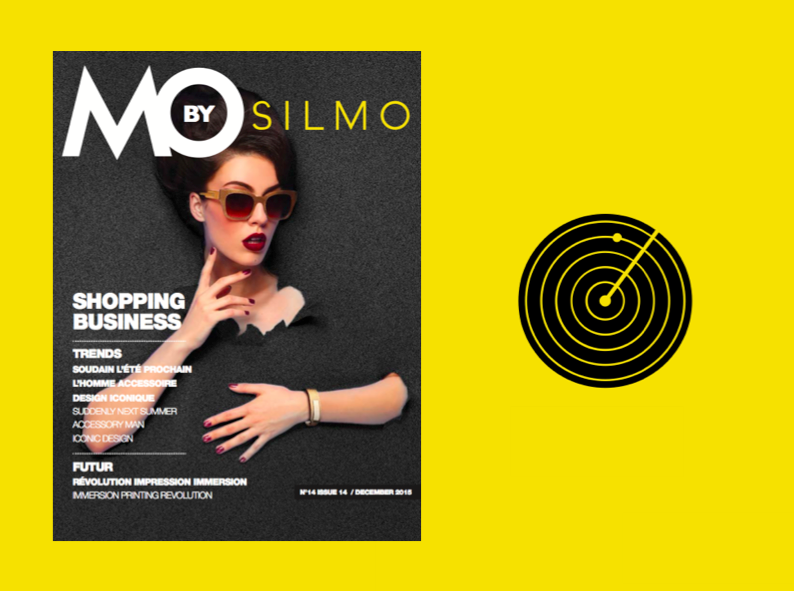La filière optique-lunetterie connaît de profondes mutations liées aux nouvelles technologies et amorce une révolution avec l’impression 3D, un marché mondial estimé à 100 milliards de dollars qui croît de 20% par an, et une méthode prometteuse pour réaliser des prototypes, mais aussi pour individualiser et personnaliser la production. Des start-up spécialisées proposent des solutions clé en main pour réaliser des montures à partir de dessins, de plans ou de fichiers STL ; des lunetiers comme Mikita, Hoët ou encore Roger Bacon Eyewear investissent dans ces technologies ; des opticiens entrent aussi dans le jeu pour répondre au désir de sur-mesure de leurs clients.
Quand il faut plusieurs jours de travail pour réaliser une monture en acétate (découpe, ponçage, assemblage des pièces et tonneau de polissage), il faut quelques heures pour une monture imprimée et ce dans différents matériaux : les plastiques de type polyamide résistant et flexible ou polymère, les résines et les céramiques, les métaux (acier, titane, or, argent, platine, etc.) et… le verre ! Plusieurs expérimentations sur le verre ont lieu actuellement, la plus avancée est celle de Mediated Matter Group qui, avec des chercheurs du MIT, a mis au point une nouvelle technologie d’impression 3D baptisée G3DP — pour Glass 3D Printing —, la première technologie qui réussit à produire du verre parfaitement transparent et d’une excellente résistance mécanique, une innovation à suivre de très près…
Le concept de personnalisation par impression 3D assure une adaptation distincte à chaque morphologie, en assurant confort réel et maintien parfait, à condition d’une prise de mesures précises. Roger Bacon Eyewear propose de scanner la morphologie de la tête du porteur à l'aide d'une tablette numérique et d’un logiciel spécifique. Mikita avec son concept My Very Own (MVO) va plus loin avec un scanner 3D et un algorithme avancé (développé avec la société Volumental) qui permet une infinité d’ajustements pour atteindre les proportions les plus justes de la morphologie du porteur, une véritable expérience client pour les opticiens les plus engagés.
Si pour Essilor la réalité virtuelle est essentielle dans le développement de nouveaux produits, le numéro un mondial du verre ophtalmique est convaincu qu’elle doit aussi entrer dans les magasins et bénéficier directement aux opticiens et aux clients. Pour cela, la société a créé Nautilus, un casque immersif de simulation en 3D. Spécifiquement conçu pour un usage en magasins, ce simulateur professionnel est réglable à la vue, paramétrable et facile à manipuler pour l’opticien qui peut faire tester et comparer les effets des différents verres à ses clients, avec une vision 3D et une correction personnalisée, facilitant ainsi son choix. Une technologie unique qui renforce la confiance dans la recommandation de l’opticien et la qualité de son conseil, élément déterminant dans le choix du magasin, premier critère de satisfaction globale selon une étude Ipsos 2012 conduite en France, en Allemagne et aux Etats-Unis.
A lire et à voir dans MO by SILMO 14 : SilmoParis et Mo-Lemag
New technologies are bringing profound transformations to the optical-eyewear field, hurtling it into a 3D printing revolution. This world market, estimated at 100 billion dollars, is developing by 20% annually. It is a promising method for creating prototypes as well as for individualizing and customizing production. Specialized start-ups are offering turnkey solutions for creating frames based on drawings, plans or STL files; companies such as Mikita, Hoët and Roger Bacon Eyewear are investing in these technologies; and opticians are getting involved to provide their clients with the customization that they desire.
Whereas several days of work are required to produce acetate frames (cutting, sanding, assembling and tumble finishing), only a few hours are needed to print them, and this can be done in a variety of materials: sturdy polyamide plastics, polymers, synthetic resins, ceramics, metals (steel, titanium, gold, silver, platinum, and so on) and... Glass! Several experiments with glass are currently underway. The most advanced is that of the Mediated Matter Group: MIT researchers are developing a new 3D printing technology called G3DP for Glass 3D Printing. This is the first technology that has succeeded in producing perfectly transparent glass with excellent mechanical resistance... An innovation to keep a close eye on!
The concept of customisation through 3D printing makes it possible to adapt the product to a distinct morphology. The process provides real comfort and a perfect fit, provided that precise measurements have been made beforehand. Roger Bacon Eyewear offers a head morphology scanner that takes these measurements using a digital tablet computer and a specific application. Mikita takes this concept one step further with My Very Own (MVO), which makes use of a 3D scanner and an advanced algorithm (developed with the company Volumental) which makes an infinite number of adjustments possible, enabling the most dedicated opticians to achieve the most precise morphological proportions and thus optimize their client experience.
While Essilor puts virtual reality at the centre of new product development, the world leader in corrective lenses is convinced that this technology also has its role in the store, where it can directly benefit opticians and clients. To get it there, the company has created Nautilus, an immersive 3D simulation headset. Specially designed for point-of-sale use, this professional simulator can be adjusted to the wearer's view. It is configurable and easy to operate, perfect for the optician who wishes to test and compare the effects of a variety of lenses with a client. The 3D view and personalized correction facilitate the client's choice. This unique technology reinforces the client's confidence in an optician's recommendations and in the quality of professional optical advice. This is a crucial element in choosing a store and the leading criterion for global satisfaction according to a 2012 Ipsos study conducted in France, Germany and the United States.
To read and see more MO by SILMO 14 : SilmoParis et Mo-Lemag

/image%2F1400776%2F20150130%2Fob_c29d74_logo-l-g.jpg)



/image%2F1400776%2F20240311%2Fob_1aa04e_134.png)
/image%2F1400776%2F20230921%2Fob_c939c8_seaportodlm.png)
/image%2F1400776%2F20230906%2Fob_8bc641_botoxmarketing.png)
/image%2F1400776%2F20230828%2Fob_1a481c_visionetaudition.png)
/image%2F1400776%2F20240506%2Fob_068625_joparis241.png)
/image%2F1400776%2F20240422%2Fob_023181_solaires2.png)
/image%2F1400776%2F20240415%2Fob_4e3a18_mo135.png)
/image%2F1400776%2F20240311%2Fob_1aa04e_134.png)